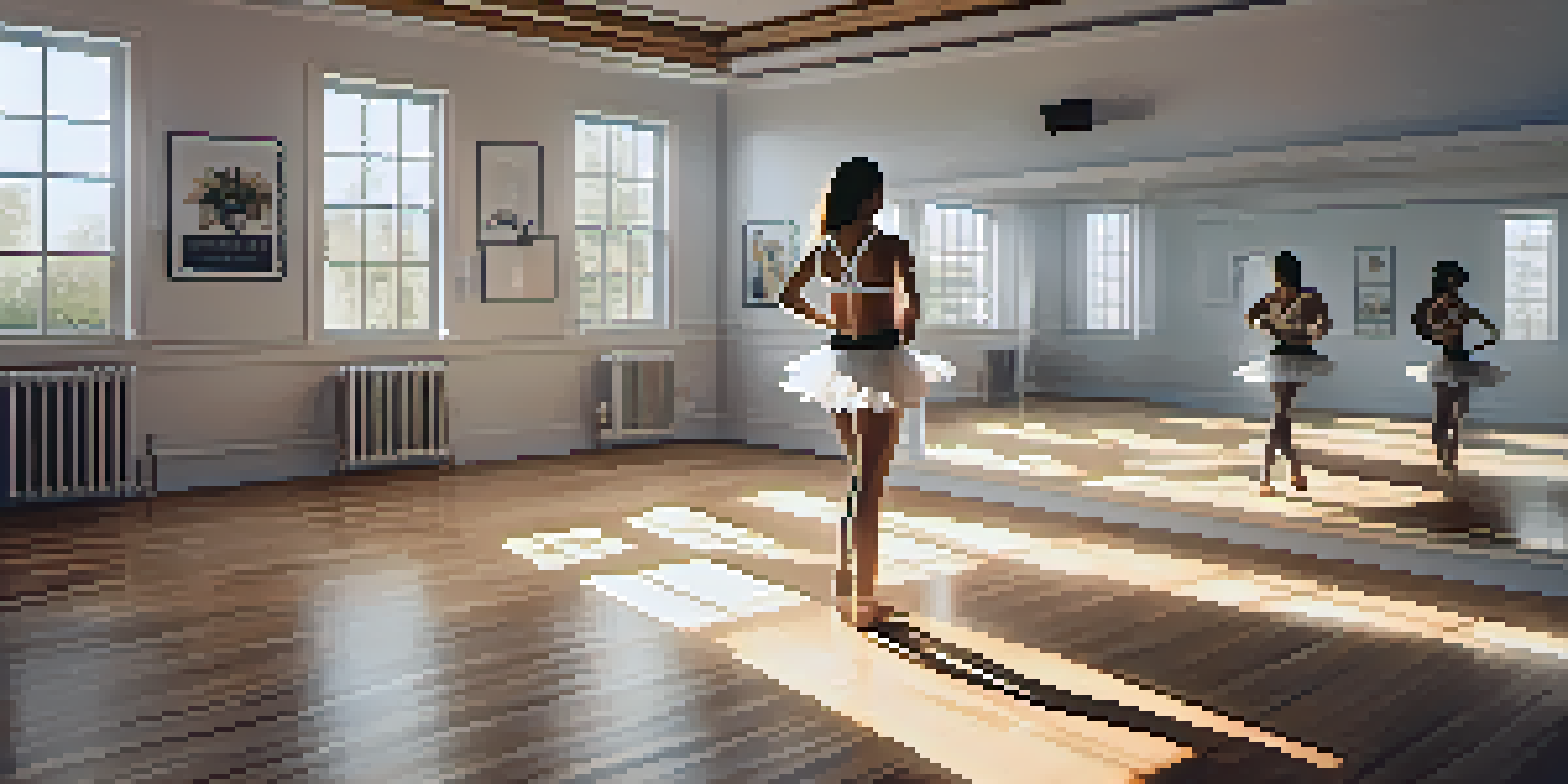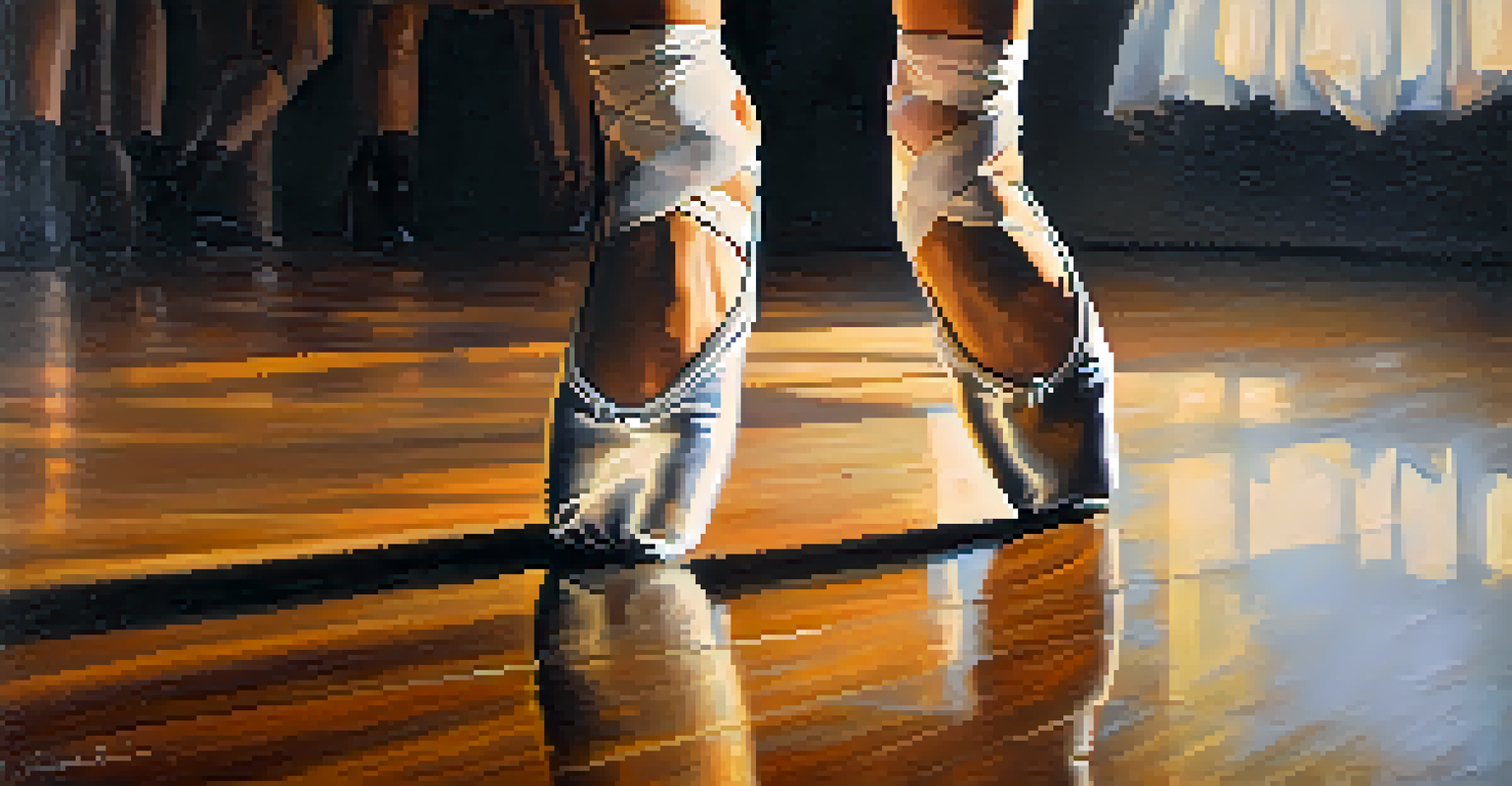Breathing Techniques to Alleviate Dance Performance Anxiety

Understanding Dance Performance Anxiety
Dance performance anxiety is a common experience among dancers, manifesting as nervousness or fear before a show. It can lead to physical symptoms like shaking or an increased heart rate, making it difficult to perform at your best. Understanding this anxiety is the first step towards managing it effectively and ensuring a more enjoyable performance experience.
The more you practice, the better you get, the more confidence you have. And that confidence translates into a performance that is more enjoyable for you and your audience.
Many dancers face this challenge, regardless of their skill level or experience. Even seasoned professionals can feel the pressure to impress their audience or judges, which can heighten anxiety. By recognizing that anxiety is a normal response, dancers can take proactive steps to mitigate its effects.
Breathing techniques serve as a powerful tool in managing this anxiety. They can help ground you, focusing your mind and body, ultimately allowing you to perform with greater confidence and clarity.
The Science Behind Breathing Techniques
Breathing techniques are backed by science, demonstrating how breath control can influence our emotional state. When we breathe deeply and slowly, we activate our parasympathetic nervous system, which promotes relaxation and reduces stress. This physiological response can significantly lower feelings of anxiety before a performance.

Moreover, controlled breathing can help regulate your heart rate and blood pressure, providing a sense of calm. This is particularly important for dancers, as physical symptoms of anxiety can interfere with muscle coordination and timing during a performance. By consciously managing your breath, you can create a more favorable internal environment for dancing.
Dance Performance Anxiety is Common
Many dancers, regardless of experience, face performance anxiety, which can hinder their ability to perform at their best.
Incorporating these techniques into your routine can lead to a more centered and focused mindset. As you practice, the positive effects of deep breathing can become a reliable ally in your performance toolkit.
Basic Deep Breathing Exercise for Dancers
One of the simplest breathing techniques is deep abdominal breathing. To practice, find a comfortable position, either sitting or lying down, and place one hand on your chest and the other on your stomach. Inhale deeply through your nose, ensuring your stomach rises while your chest remains relatively still, then exhale slowly through your mouth.
Breath is the bridge which connects life to consciousness, which unites your body to your thoughts.
This exercise encourages full oxygen exchange, which not only calms the body but also clears the mind. Aim to practice this for a few minutes daily, gradually increasing the duration as you feel more comfortable. The goal is to make deep breathing a natural response in moments of stress.
As you become more familiar with this technique, try incorporating it before rehearsals or performances. Simply taking a moment to focus on your breath can help reset your mental state and diminish anxiety.
Box Breathing: A Structured Approach
Box breathing, also known as square breathing, is a structured technique that can be particularly effective for dancers. To practice, visualize a box and inhale for a count of four, hold your breath for another count of four, exhale for four, and then pause for four before repeating. This rhythmic pattern helps regulate your breath and calm your nervous system.
What makes box breathing so powerful is its predictability; it offers a structured way to manage anxiety in high-pressure situations. By focusing on your breath in this way, you can divert your attention from anxious thoughts to the calming rhythm of your breathing. This can be especially beneficial just before stepping onto the stage.
Breathing Techniques Reduce Anxiety
Controlled breathing methods, like deep abdominal and box breathing, can effectively calm nerves and enhance focus before performances.
Practicing box breathing regularly can build your resilience against performance anxiety. Over time, it can become an automatic response whenever you feel nervous, equipping you with a reliable tool for managing stress.
Visualizing Your Breathing
Visualization is a helpful technique that can enhance your breathing exercises. As you practice deep or box breathing, imagine a calming scene, like a peaceful beach or a serene forest. Pairing your breath with visualization can create a powerful mental image that promotes relaxation.
This technique works by engaging your mind in a positive way, allowing you to focus on something other than your anxiety. By picturing a tranquil setting, you can create a sense of safety and calm that aids your performance. This combination of visualization and breath control can significantly improve your mental preparedness.
Try incorporating visualization into your pre-performance routine. As you breathe deeply, allow yourself to fully immerse in your chosen scene, which can help ground you and reduce feelings of anxiety.
The Role of Mindfulness in Breathing Techniques
Mindfulness and breathing techniques go hand in hand, enhancing your ability to manage anxiety. Mindfulness encourages you to be present in the moment, allowing you to observe your thoughts and feelings without judgment. When combined with breathing exercises, this awareness can help you detach from anxious thoughts and focus on your performance.
By practicing mindfulness, you learn to recognize when anxiety arises and respond with calming breaths rather than getting swept away by negative feelings. This creates a sense of empowerment, reminding you that you are in control of your reactions. Over time, this can lead to a more confident performance.
Mindfulness Enhances Performance Calm
Incorporating mindfulness with breathing exercises helps dancers stay present and manage anxiety during performances.
Incorporating mindfulness into your daily routine can significantly improve your overall well-being as a dancer. Simple practices like mindful breathing or meditation can help you cultivate a more centered approach to both practice and performance.
Creating a Personal Breathing Routine
Establishing a personal breathing routine can be vital for managing performance anxiety. Consider what techniques resonate with you—whether it's deep breathing, box breathing, or a combination of methods. The key is to practice consistently, making these techniques a natural part of your pre-performance ritual.
To create your routine, set aside a few minutes each day to practice your chosen techniques. You might start by practicing in a quiet space, gradually incorporating your techniques into busier environments as you become more comfortable. This will help prepare you for the unpredictability of performance situations.

Tailoring your routine to fit your personal style can enhance its effectiveness. By integrating these breathing techniques into your dance practice, you can build confidence and reduce anxiety, ultimately helping you shine on stage.